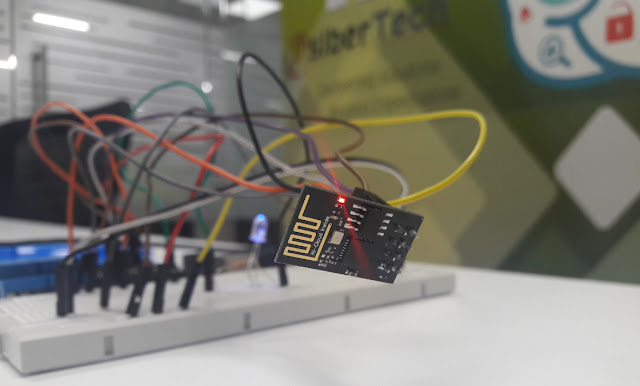IoT is daunting term in any board meeting for many companies big or small. Although the disruptive technology is making waves with bigger corporation especially in the B2C consumer electronics sector, Several Medium and Small companies still have inhibitions towards IoT.
Even today, many business owners are still resisting the push towards fully incorporating Internet of Things (IoT) devices into their company. However, the network of devices that constitutes the IoT is set to grow at a staggering rate over the next few years according to study conducted by McAffe. With that note, welcome to the 1st part of the IoT for SME blog series.
IoT is at our wrists (quiet literally in our palm) when we use a Fitbit to record and transmit data when we exercise and sleep. IoT powers smart appliances present in some homes today be it Air-condition, refrigerator etc. where we can control them remotely via a smartphone app. So why not use IoT when it comes to business automation, especially for SMEs?
There could be several factors which affects this decision, some of them are:
1. Money
2. Expertise / Knowledge
3. Money!
IoT is at our wrists (quiet literally in our palm) when we use a Fitbit to record and transmit data when we exercise and sleep. IoT powers smart appliances present in some homes today be it Air-condition, refrigerator etc. where we can control them remotely via a smartphone app. So why not use IoT when it comes to business automation, especially for SMEs?
There could be several factors which affects this decision, some of them are:
1. Money
2. Expertise / Knowledge
3. Money!
While knowledge can be acquired online with zero cost, often the idea of spending thousands of dollars on IoT for a small business is a definite NO.
Let’s put a pin on the Cost at this moment and we shall come back to that once I finish my argument on how SME could ride the wave of IoT.
Remember the time when ATM is used to run out on cash (alright this still happens in some developing countries), however not so much in developed countries like Singapore. Let’s take an example of how DBS addressed this situation. DBS Singapore– adopted to IoT, real-time data collection at a quite early stage. From the data DBS analyzed the withdrawal patterns to understand varying demands of cash in different locations, days and hour of the day. It succeeded by minimizing the number of empty ATMs up to 80%.
Saves Cost, Time and more
Remember the time when ATM is used to run out on cash (alright this still happens in some developing countries), however not so much in developed countries like Singapore. Let’s take an example of how DBS addressed this situation. DBS Singapore– adopted to IoT, real-time data collection at a quite early stage. From the data DBS analyzed the withdrawal patterns to understand varying demands of cash in different locations, days and hour of the day. It succeeded by minimizing the number of empty ATMs up to 80%.
Saves Cost, Time and more
The IoT encompasses a vast and intricate network of devices, each collecting valuable data about their users. Imagine the avatar movie of connected trees? Yeah something like that.
This data gives SMEs an opportunity to measure and analyze the landscape of consumers, Allowing them the facility to have constant updates on their consumer’s behavioral habits. This is god sent for SMEs, especially with less budget to waste on operating expenses, IoT saves time, resources and operational costs.
Singapore Government comes to the rescue for SME
Don’t have necessary investment for IoT for your business? Don’t worry the government got your back on this. Government grants can help you with funds necessary for your IoT implementation.You can check here about the various government grants that are available for SME /Small businesses seeking to innovate their business technologically.
Singapore Government comes to the rescue for SME
Don’t have necessary investment for IoT for your business? Don’t worry the government got your back on this. Government grants can help you with funds necessary for your IoT implementation.You can check here about the various government grants that are available for SME /Small businesses seeking to innovate their business technologically.
One of the interesting option would be ICT for Productivity and Growth programme . This grant encourages piloting emerging solutions in the areas of sensor, data analytics and robotics and subsidises 80% of the qualifying pilot project costs, up to $1 million! Yes, your heard it right. Read more on The Infocomm Development Authority (IDA) site and on the provided links to learn more, if you need a consultant to help you with identifying IoT solutions, please click here to contact us.
Srivatsan Aravamudan
| General Enquiries | : | info@psibertech.com.sg |
| Sales Enquiries | : | sales@psibertech.com.sg |
| Telephone | : | +65 62689551 |
| Fax | : | +65 62689858 |
Business Analyst - Snr Software Consultant.









